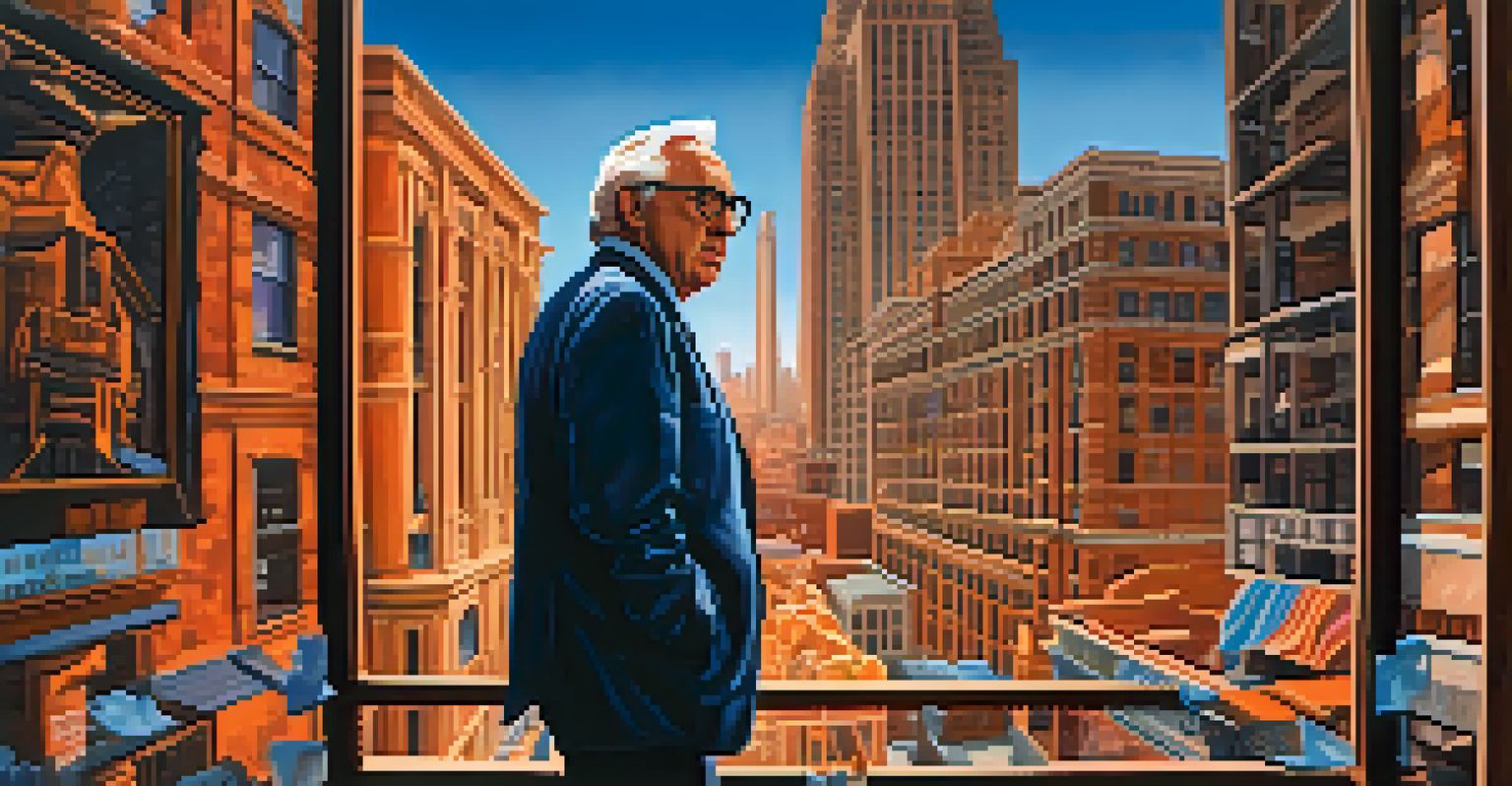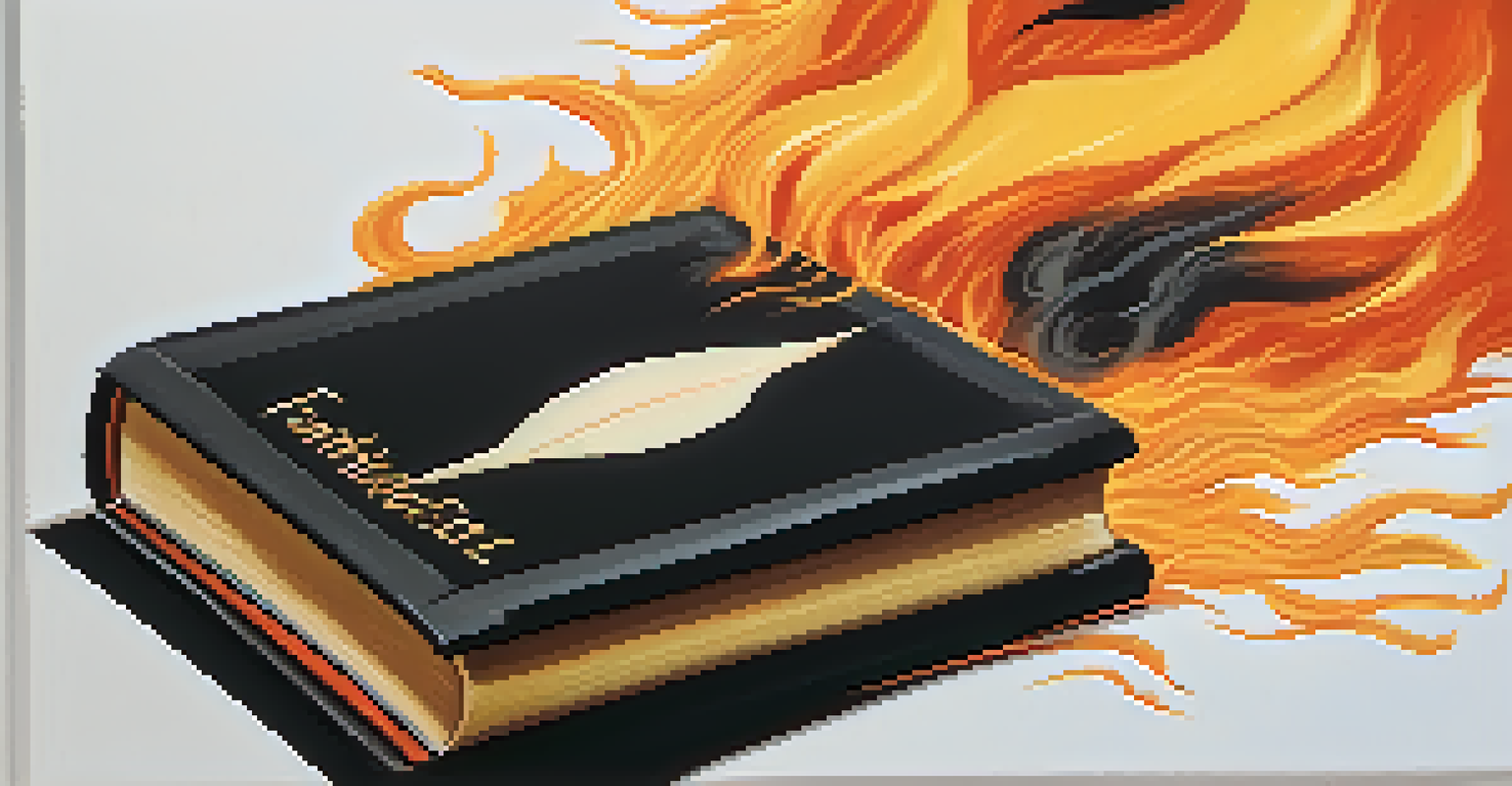Ray Bradbury: The Author Who Shaped Science Fiction in LA

Early Life and Influences in Waukegan, Illinois
Ray Bradbury was born in Waukegan, Illinois, in 1920, a city that would later inspire many of his fictional settings. Growing up during the Great Depression, Bradbury found solace in books and the magic of storytelling. Influenced by authors like Edgar Allan Poe and H.G. Wells, he began to weave fantastical tales that captured his imagination. This early exposure to literature planted the seeds for his future career as a science fiction writer.
You don't have to burn books to destroy a culture. Just get people to stop reading them.
As a child, Bradbury was fascinated by the works of science fiction and fantasy, often escaping into worlds of his own creation. His love for the genre was further ignited by the advent of the pulps, which were a staple in American literature at the time. This passion led him to write his first short stories as a teenager, showcasing his unique voice and creativity. It was clear that he was destined to make a mark on the literary world.
Ultimately, Bradbury's formative years in Waukegan not only shaped his writing but also his worldview. With the backdrop of a small Midwestern town, he drew upon his experiences and observations to create relatable characters and imaginative settings. This foundation would later serve as a springboard for his relocation to Los Angeles, where he would truly flourish as a writer.
The Move to Los Angeles and Its Impact
In 1934, Bradbury's family relocated to Los Angeles, a city that would become synonymous with his writing career. The vibrant culture and burgeoning film industry of LA offered a fresh canvas for his imagination. Bradbury quickly immersed himself in the city's literary scene, attending local meetings and connecting with other writers. This community helped to hone his craft and inspired him to explore new themes in science fiction.

Los Angeles also introduced Bradbury to the world of cinema, which would influence his storytelling profoundly. The city's unique blend of fantasy and reality allowed him to envision narratives that transcended traditional boundaries. Films like 'Metropolis' and 'Frankenstein' sparked his creativity, leading him to experiment with visual storytelling in his prose. This fusion of literature and film became a hallmark of his work.
Bradbury's Early Inspirations
Ray Bradbury's formative years in Waukegan, Illinois, instilled a love for literature that shaped his imaginative storytelling.
As he settled into the LA lifestyle, Bradbury began to publish stories that reflected his thoughts on technology, society, and the human condition. His experiences in the city informed his writing, allowing him to explore complex themes with a local lens. This connection to Los Angeles not only shaped his identity as a writer but also solidified his status as a pioneer in the science fiction genre.
Fahrenheit 451: A Defining Masterpiece
Published in 1953, 'Fahrenheit 451' stands as one of Bradbury's most iconic works, encapsulating the essence of his vision for the future. The novel depicts a dystopian society where books are banned and 'firemen' burn any that are found. Bradbury's poignant critique of censorship and the dangers of an uninformed populace resonated deeply with readers, and it remains a relevant topic today. This work solidified his reputation as a thought-provoking author.
I’m not sure what the future holds, but I know that I’m going to be there to see it.
Bradbury's ability to blend social commentary with imaginative storytelling is what sets 'Fahrenheit 451' apart. Through the protagonist, Guy Montag, readers are invited to question the value of knowledge and the importance of individual thought. Bradbury's vivid imagery and emotional depth draw readers into a world that feels both foreign and alarmingly familiar. This connection is what keeps the novel alive in contemporary discussions.
The success of 'Fahrenheit 451' not only earned Bradbury critical acclaim but also positioned him as a significant voice in American literature. It sparked conversations about freedom, technology, and the future of humanity. Bradbury's foresight in addressing these issues continues to inspire new generations of writers and thinkers, making this novel a timeless classic.
The Role of Television and Film in His Works
Bradbury's relationship with television and film was complex; he both embraced and critiqued the medium. While he recognized its potential to reach vast audiences, he also feared its ability to desensitize viewers. This duality is evident in his works, where he often explored the consequences of technology on society. His stories frequently serve as cautionary tales, reminding us of the fragility of human connection in a digital age.
In the 1950s and 60s, Bradbury's works began to be adapted for television and film, bringing his imaginative worlds to life. Shows like 'The Ray Bradbury Theater' allowed him to showcase his stories to a broader audience, blending literary brilliance with visual storytelling. These adaptations helped bridge the gap between literature and entertainment, making his stories accessible to those who might not pick up a book. It also highlighted the versatility of his writing.
Influence of Los Angeles
Moving to Los Angeles allowed Bradbury to immerse himself in a vibrant literary scene, influencing his exploration of technology and society in his works.
However, Bradbury was selective about which stories were adapted, often preferring to retain creative control. He understood that the essence of his narratives could be lost in translation, which is why he collaborated with filmmakers who shared his vision. This careful approach ensured that his stories maintained their integrity while reaching new audiences, showcasing his commitment to both the written word and its visual interpretations.
Exploring Themes of Technology and Humanity
Throughout his career, Bradbury consistently explored the relationship between technology and humanity. He envisioned a world where innovation could elevate our lives but also warned against the potential pitfalls of unchecked advancement. In works like 'The Martian Chronicles,' he illustrated how technology could be both a tool for exploration and a source of destruction. This nuanced perspective encourages readers to reflect on their own relationship with technology.
Bradbury's stories often depict characters grappling with the consequences of their choices in a rapidly changing world. For instance, in 'The Illustrated Man,' the protagonist's tattoos tell stories of the future, revealing the intertwining of fate and free will. This exploration of human agency amidst technological progress adds depth to his narratives and resonates with readers on a personal level. It encourages us to consider how our actions shape our reality.
By weaving these themes throughout his work, Bradbury invites readers to engage in meaningful conversations about the future. His ability to blend science fiction with philosophical inquiry sets him apart from many of his contemporaries. As we navigate an increasingly complex world, Bradbury's insights remain poignant, reminding us of the importance of balance between innovation and our shared humanity.
Legacy and Influence on Future Generations
Ray Bradbury's impact on the science fiction genre is immeasurable, influencing countless authors and creators who followed in his footsteps. His unique blend of imagination and social commentary paved the way for future generations to explore similar themes. Writers like Neil Gaiman and Stephen King have cited Bradbury as a significant influence, demonstrating the lasting power of his work. His stories continue to inspire new narratives that challenge our understanding of technology and society.
Bradbury's legacy extends beyond literature; his themes resonate in film, television, and even contemporary discussions about technology. Movies inspired by his works, such as 'Something Wicked This Way Comes,' keep his ideas alive, showcasing the timeless quality of his storytelling. Additionally, his insistence on the importance of reading and critical thinking remains relevant in today's fast-paced, digital world.
Legacy as a Cultural Icon
Bradbury's contributions to science fiction and his themes of technology and humanity continue to inspire new generations of writers and creators.
As we reflect on Bradbury's contributions to literature and culture, it's clear that his voice continues to echo in the works of modern creators. His ability to address complex issues with compassion and imagination ensures that his stories will endure for generations to come. Bradbury's work serves as a reminder of the power of storytelling to provoke thought, inspire change, and shape our understanding of the human experience.
Celebrating Bradbury: A Cultural Icon in Los Angeles
Ray Bradbury's connection to Los Angeles is celebrated through various cultural initiatives, including festivals and literary events honoring his legacy. The city has embraced his contributions, recognizing him as a cultural icon who shaped the landscape of science fiction. Programs like the Ray Bradbury Creative Literacy Program encourage young writers to explore their creativity, perpetuating his spirit of imagination. These initiatives ensure that his influence continues to inspire future generations.
Moreover, landmarks in Los Angeles, such as the Bradbury Building, serve as a tribute to his impact on the city. This architectural gem symbolizes the intersection of creativity and innovation, much like Bradbury's work. Visitors often reflect on his stories while traversing its intricate halls, experiencing firsthand the magic that permeated his writing. Such connections to the city further highlight his importance in the literary and cultural fabric of Los Angeles.

As we celebrate Bradbury's contributions, it's essential to recognize how his work transcends time and geography. His ability to capture the essence of the human experience resonates with audiences worldwide, making him a beloved figure beyond the borders of Los Angeles. By honoring his legacy, we not only celebrate his past but also inspire a future filled with creativity, curiosity, and the timeless power of storytelling.